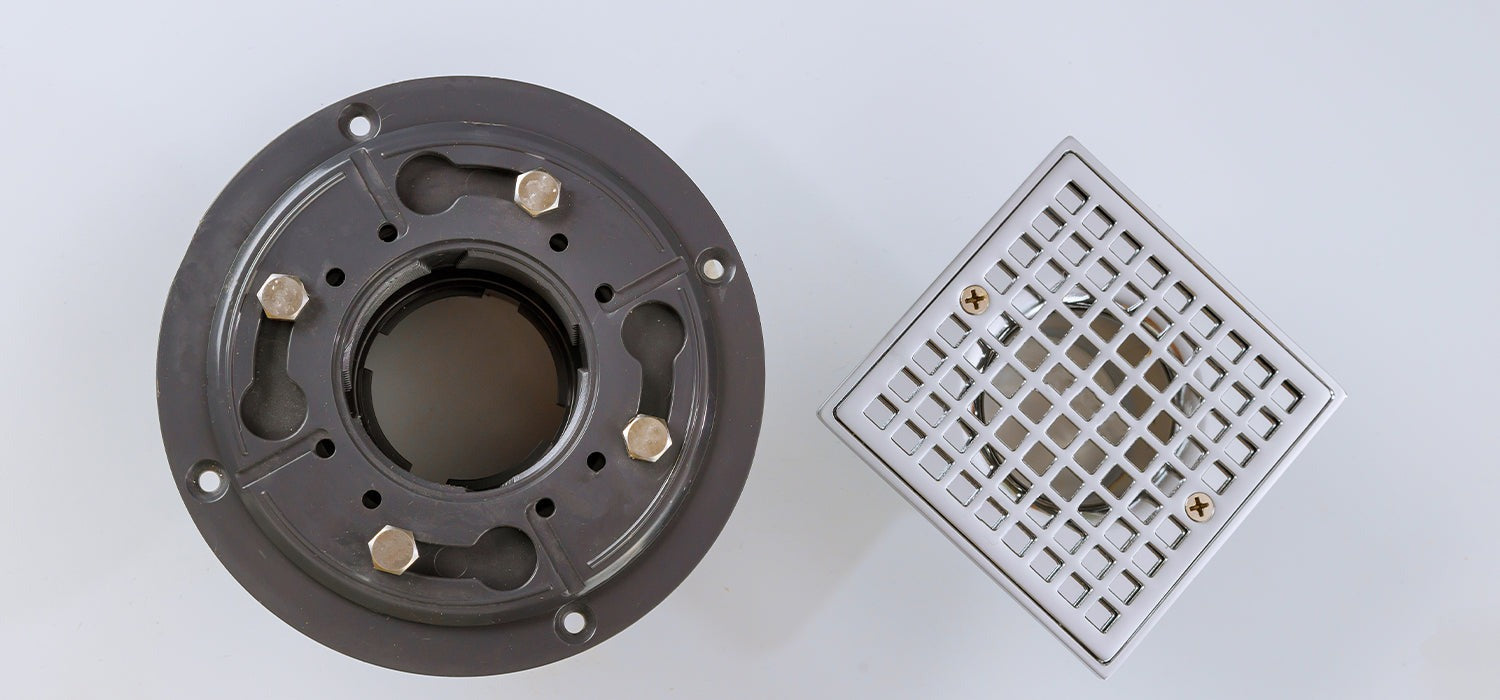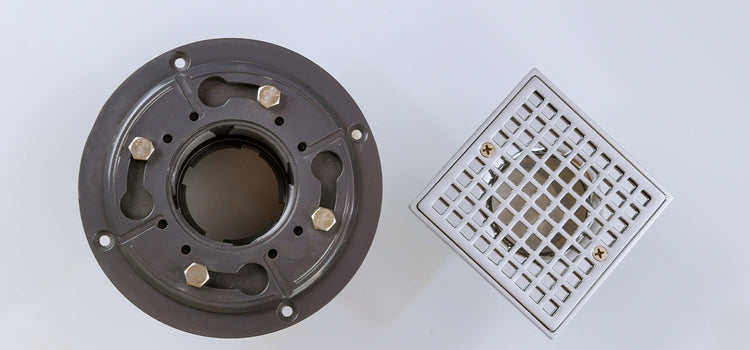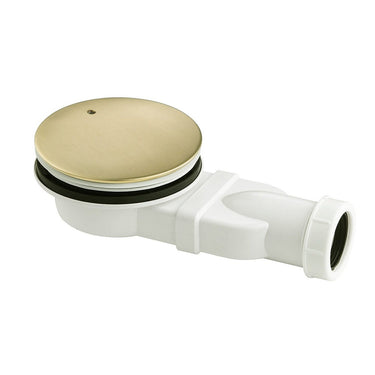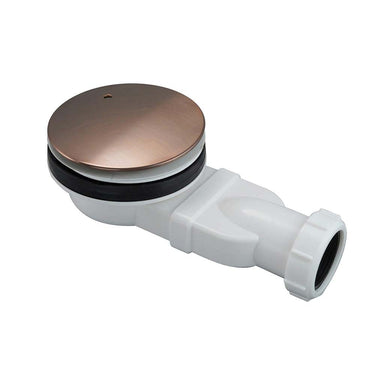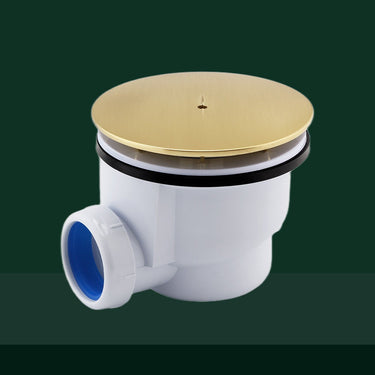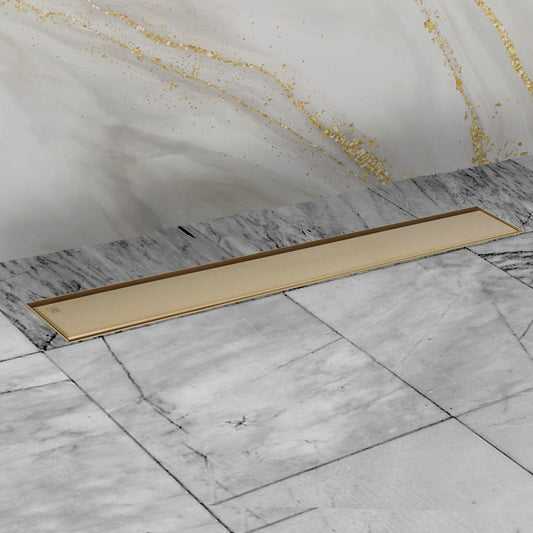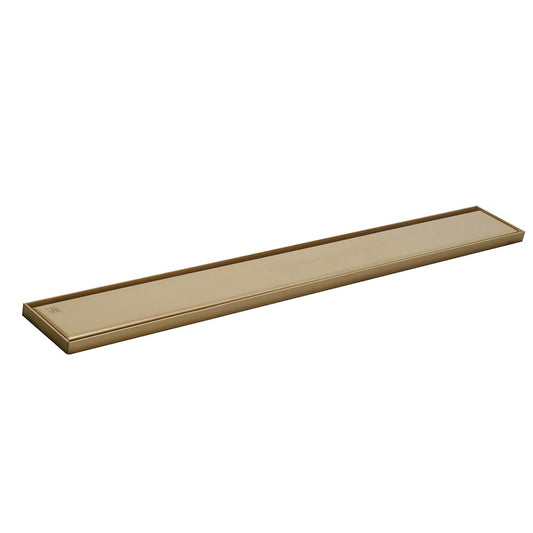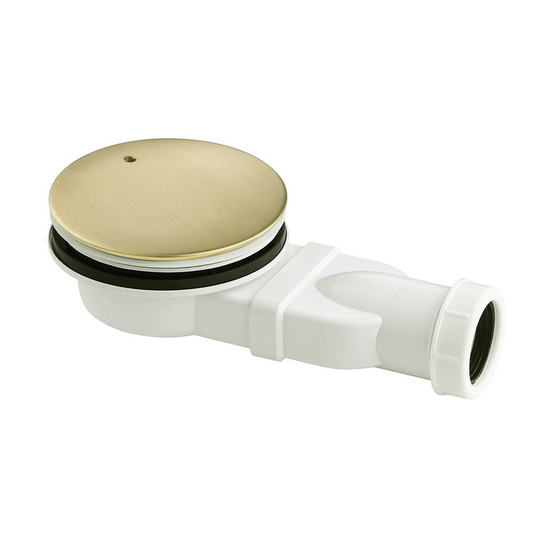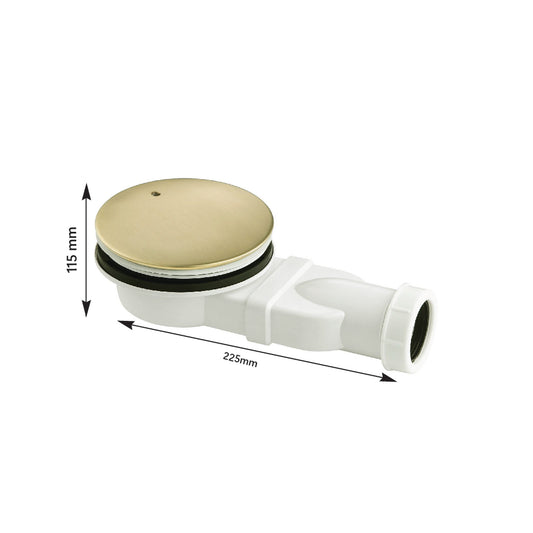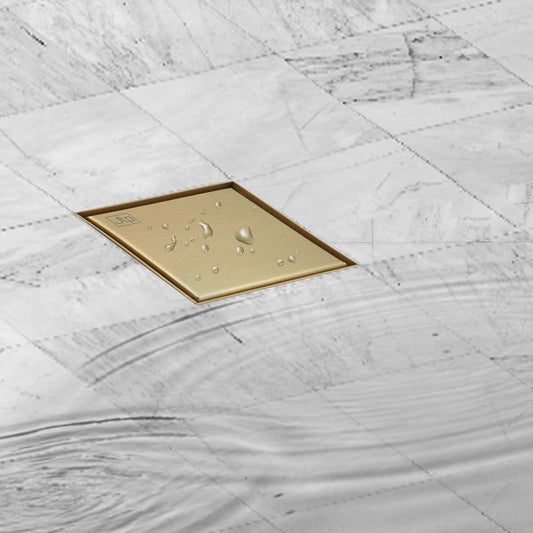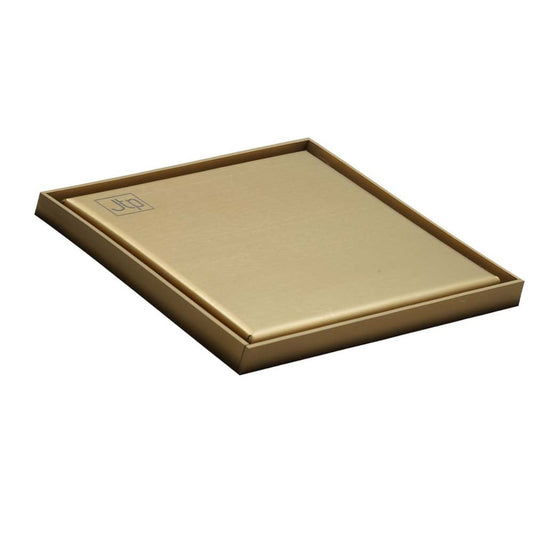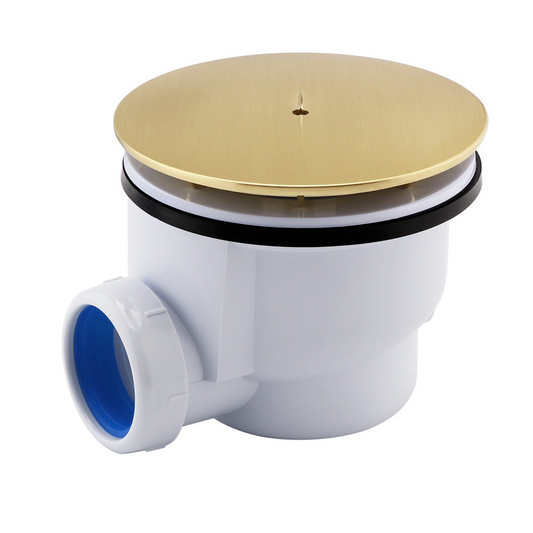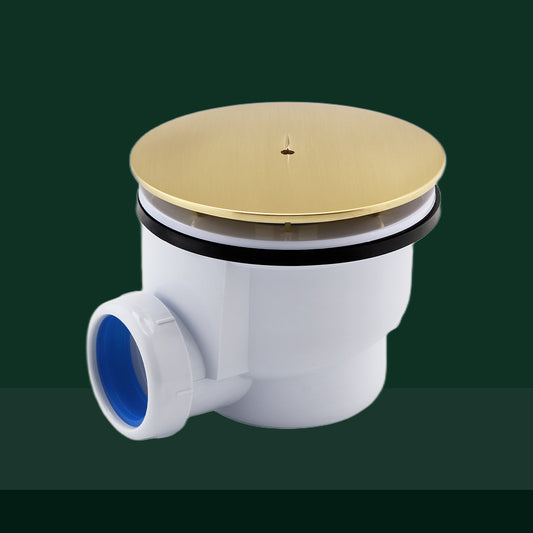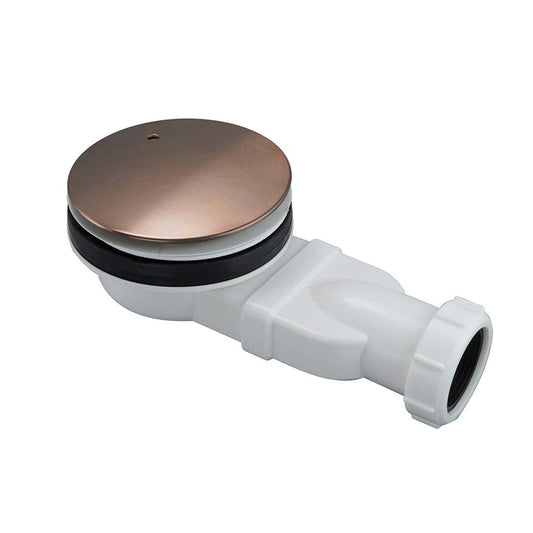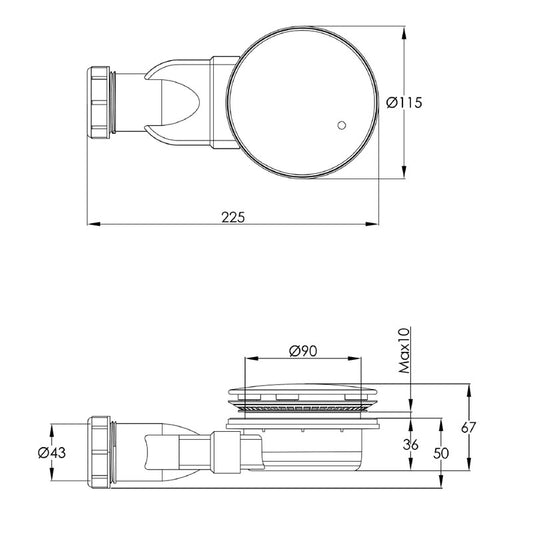The Ultimate Shower Waste and Shower Trap Buying Guide
Table Of Contents:
-
Introduction
-
What Is a Shower Waste and Shower Trap?
-
Why Do You Need the Right Shower Waste and Trap?
-
Different Types of Shower Waste and Traps
-
How to Choose the Right Shower Waste and Trap
-
Essential Tips for Maintaining Your Shower Waste and Trap
-
Cost of Shower Waste and Trap Systems in the UK
-
Conclusion
-
FAQs
Introduction
When it comes to installing or renovating a bathroom, choosing the right shower waste and shower trap is often overlooked, but it plays a critical role in the efficiency and longevity of your shower. A well-selected shower waste and trap not only ensure that water drains properly, but they also prevent unpleasant odors and blockages. This guide will walk you through everything you need to know to make the best choice when buying shower waste and trap systems for your bathroom.
What Is a Shower Waste and Shower Trap?
A shower waste and a shower trap are essential components of your bathroom’s drainage system, responsible for ensuring that water flows properly out of your shower area. While they work together, they serve different functions that are crucial for the efficient and hygienic operation of your shower.
Shower Waste
The shower waste refers to the entire drainage system that carries water away from your shower tray or floor. It typically includes the drain cover, the waste body, and the pipe that connects the drain to the rest of your home’s plumbing system. The waste allows water to drain out of the shower area and prevents standing water from accumulating, which can lead to flooding or water damage. It is designed to handle water runoff from the shower and ensure smooth water flow into the plumbing system.
Shower Trap
The shower trap is a crucial component within the waste system that prevents unpleasant smells from entering the bathroom. It works by retaining a small amount of water in its curved design, creating a barrier or seal that blocks sewer gases from coming back up through the drain. Without a shower trap, you could experience foul odors or even health hazards from the contamination of air inside the bathroom. Shower traps are typically built into the waste system and come in various designs and sizes to accommodate different types of drains.
Together, the shower waste and trap ensure your shower drains efficiently, stays odor-free, and prevents water from backing up into your shower or bathroom.
Why Do You Need the Right Shower Waste and Trap?
Choosing the right shower waste and shower trap is essential for creating a functional, hygienic, and long-lasting bathroom. These components play a crucial role in managing water flow and maintaining the cleanliness and odor-free environment of your shower. Here’s why it’s important to select the correct shower waste and trap:
1. Efficient Water Drainage
The main purpose of a shower waste is to drain the water from your shower area efficiently. If the system is too small, poorly installed, or incompatible with your shower type, you could face water buildup in your shower tray or wet room. This could result in standing water, which may lead to flooding, water damage, or mold growth. The right waste system ensures water flows smoothly and quickly, preventing such problems and keeping your shower area dry.
2. Odor Prevention
The shower trap serves as a barrier against unpleasant smells by retaining a small amount of water that prevents sewer gases from entering your bathroom. If the trap isn’t properly sealed or is poorly designed, you may start noticing foul odors in your shower, which can affect the comfort and hygiene of your entire bathroom. A well-chosen trap will keep your bathroom smelling fresh and prevent these unwanted odors from rising from the drain.
3. Blockage Prevention
A properly designed waste and trap system helps to minimize the chances of blockages. Over time, debris like hair, soap scum, and grime can accumulate in your drain. If your waste and trap are not adequately sized or designed to handle these particles, you may encounter frequent clogs. The right system helps to reduce the buildup of waste in your pipes, keeping your drainage system clear and functioning properly.
4. Hygiene and Cleanliness
When you have the right shower waste and trap, water drains properly, preventing stagnation. Stagnant water can become a breeding ground for bacteria, mold, and mildew, posing a health risk. A high-quality system ensures that water is drained immediately, helping maintain cleanliness and hygiene in your bathroom. Additionally, a good trap helps to keep your shower free from unpleasant odors and bacteria, ensuring a safe and clean environment.
5. Long-Term Durability
Selecting the right shower waste and trap system ensures durability and longevity. High-quality materials, such as brass or stainless steel, offer greater resistance to corrosion and wear over time. Investing in the correct components reduces the likelihood of malfunctions, leaks, and the need for costly repairs or replacements in the future. Choosing the right system means a more reliable and long-lasting solution.
6. Ease of Installation and Maintenance
When you choose the correct shower waste and trap for your setup, installation becomes easier and more straightforward. Additionally, a properly installed system is easier to maintain. Systems that are well-designed and compatible with your plumbing require less frequent cleaning and fewer repairs. They are designed to work with minimal issues, reducing the amount of time and effort needed for upkeep.
7. Aesthetic Compatibility
Modern shower waste and trap systems come in a variety of designs, finishes, and sizes. Choosing the right one can complement the overall look and feel of your bathroom. For example, sleek, concealed drain systems or stylish covers that match the rest of your bathroom’s décor can elevate the visual appeal of your shower area, all while remaining highly functional.
8. Cost-Effectiveness
In the long run, choosing the right shower waste and trap system can save you money. A properly functioning system will reduce the likelihood of frequent repairs, blockages, and odor issues that might require costly professional assistance. Investing in a high-quality system may have a higher upfront cost, but it will provide long-term value by avoiding potential damage to your shower and plumbing system.
The importance of choosing the right shower waste and shower trap cannot be overstated. These components are essential for efficient drainage, odor control, hygiene, and the overall performance of your shower. By selecting the right waste and trap system for your bathroom, you’re investing in a hassle-free, clean, and long-lasting shower experience. Take the time to research your options, and you’ll be rewarded with a functional, odor-free, and visually appealing bathroom that operates smoothly for years to come.
Different Types of Shower Waste and Traps
When selecting a shower waste and shower trap system, it's important to understand the different types available. Each type serves a specific function, and the right choice depends on factors like the size of your shower, the type of shower tray, your plumbing setup, and aesthetic preferences. Here’s a breakdown of the most common types of shower waste and traps:
1. Standard Shower Waste and Trap
This is the most common type of shower waste and trap system. It consists of a basic waste outlet connected to a trap, usually made of plastic. The trap holds a small amount of water to create a seal, preventing unpleasant odors from entering the bathroom. The water drains into a pipe, typically leading to your home’s drainage system. These systems are easy to install and affordable, making them a popular choice for many homeowners.
2. High-Flow Shower Waste
High-flow shower waste systems are designed for larger or wet-room-style showers that experience high volumes of water runoff. These systems are built to handle a faster drainage rate, ensuring that water flows freely even in larger spaces. High-flow systems are commonly used in commercial settings or in high-pressure shower setups where faster drainage is needed to prevent water buildup. These systems often feature larger or multiple drain outlets to accommodate the increased flow.
3. Concealed Shower Waste
Concealed shower waste systems are a sleek, modern option that integrates the waste and trap components into the floor or wall, leaving only a small, discreet drain cover visible. This type of system is particularly popular in contemporary bathrooms where aesthetics are important. The concealed design eliminates visible piping, giving the bathroom a clean, streamlined look. It’s often used with walk-in showers or wet rooms where the focus is on minimalism and design.
4. Linear Shower Drain
Linear drains are long, narrow drains that run along the length of the shower. They are usually installed in the shower’s floor, with a sloped surface that guides water toward the drain. These systems are ideal for modern, open-concept showers and wet rooms. A linear drain can provide a sleek, unobtrusive appearance while offering highly efficient water drainage. They’re often used in high-end renovations due to their aesthetic appeal and performance.
5. Central Shower Drain
A central shower drain is placed at the center of the shower tray or floor and is ideal for traditional shower setups. This type of drain is typically used in square or rectangular shower trays and provides a reliable way to drain water from the entire shower area. It is often paired with a standard trap system to ensure proper drainage and odor control. The central position of the drain allows for water to flow evenly from all sides of the shower.
6. Fast Flow Shower Trap
A fast flow trap is designed to allow water to drain more quickly than standard traps. These are particularly useful in showers with high water flow, such as power showers or rain showerheads. Fast flow traps are larger or have an increased outlet size to handle the faster drainage rate. If you have a high-pressure shower system, opting for a fast flow trap will help prevent water from pooling in your shower tray and ensure efficient drainage.
7. Pop-Up Shower Waste
A pop-up shower waste is a type of waste outlet that has a built-in mechanism that allows the user to open and close the drain with a simple push. These systems are often seen in modern bathrooms for added convenience. The pop-up design lets you control the water flow, which is particularly useful in preventing large debris from entering the drain or if you want to temporarily block the drainage. This is a less common but increasingly popular choice for those seeking extra functionality.
8. Shower Trap with Anti-Splash Guard
A shower trap with an anti-splash guard is designed to prevent water from splashing back up the drain, a common issue in showers with higher water pressure or irregular drainage. The splash guard ensures that water moves smoothly and prevents any disruptions in the flow. This type of trap is ideal for bathrooms with high-flow showerheads or larger shower trays where splashing could be a concern.
9. Adjustable Shower Waste and Trap
For those who need more flexibility in their shower installation, an adjustable waste and trap system might be the perfect solution. These systems are designed with adjustable components that allow you to fine-tune the height and position of the drain and trap. They are perfect for custom or unusual installations where precise measurements are required. Adjustable shower wastes are ideal for people renovating their bathrooms or installing new shower trays where height adjustments are needed.
10. Bottle Trap
The bottle trap is commonly used in smaller or compact showers where space is at a premium. Unlike traditional traps, the bottle trap has a compact, cylindrical shape that takes up less room under the shower tray. Despite its size, it still functions effectively to prevent odors and allow water to flow freely. Bottle traps are often used in bathrooms with limited space or in installations where aesthetic considerations require a smaller profile under the shower area.
There are several types of shower waste and trap systems available, each designed to meet specific needs based on the type of shower, flow requirements, aesthetic preferences, and space considerations. Whether you opt for a high-flow drain, a concealed shower waste, or a linear drain, selecting the right system is essential for ensuring efficient water drainage, preventing odors, and maintaining the overall hygiene of your bathroom. Take the time to evaluate your shower setup, and choose the best waste and trap system for your needs to enjoy a functional, clean, and long-lasting shower experience.
How to Choose the Right Shower Waste and Trap
Choosing the right shower waste and shower trap is crucial for ensuring efficient water drainage, maintaining hygiene, and preventing plumbing issues in your bathroom. With a variety of options available, it’s important to consider several factors when selecting the best waste and trap system for your shower. Here’s a guide to help you make the right choice:
1. Understand Your Shower Type
The first step in choosing the right shower waste and trap is to consider the type of shower you have. Different showers require different types of drainage solutions.
-
Traditional Shower Tray: If you have a traditional shower tray, you’ll likely need a standard central drain or a high-flow waste system, depending on the water pressure and size of your shower.
-
Wet Room or Walk-In Shower: Wet rooms and walk-in showers often benefit from linear drains or concealed waste systems, as these provide efficient drainage while maintaining a sleek, minimalist look.
-
Power or High-Flow Showers: If you have a high-pressure or power shower, you may need a high-flow or fast flow trap to handle the increased water output without causing blockages or slow drainage.
2. Drain Size and Flow Rate
Different shower waste and trap systems are designed to handle varying amounts of water. Consider the flow rate of your shower when selecting a drain.
-
Standard Showers: For standard showers with average water pressure, a regular shower waste and trap system will suffice. These systems can handle average flow rates and are widely available.
-
High-Pressure Showers: If you have a power shower or a high-pressure showerhead, it’s important to choose a high-flow drain or a fast-flow trap. These are designed with larger outlets and can handle the increased water flow, ensuring efficient drainage and preventing blockages.
3. Material and Durability
The material of your shower waste and trap will directly affect its durability and performance. It’s important to choose materials that are resistant to corrosion, wear, and build-up from soap scum and hard water. Common materials include:
-
Brass: Known for its durability and resistance to corrosion, brass is a popular choice for both the trap and the waste system. It is often used in higher-end products due to its long-lasting quality.
-
Stainless Steel: Stainless steel is another durable, corrosion-resistant material that’s commonly used in shower waste systems. It’s a good choice for both aesthetics and functionality, as it blends well with modern bathroom designs.
-
Plastic: While not as durable as brass or stainless steel, plastic is a more affordable option. It’s commonly used for standard waste systems and traps in most homes. However, it may need to be replaced more frequently than metal counterparts.
4. Aesthetic Preferences
Shower waste and trap systems come in various designs, from basic, functional systems to more stylish, decorative ones. If aesthetics are important to you, consider options that complement the overall look of your bathroom.
-
Concealed Systems: For a clean, minimalist look, concealed waste systems integrate into the floor or wall, leaving only the drain cover visible. These systems are often used in modern, high-end bathrooms or wet rooms.
-
Linear Drains: A linear drain is a sleek, long drain typically installed along the length of the shower. It’s an excellent choice for contemporary bathrooms or large walk-in showers.
-
Pop-Up Drains: For added convenience, some shower waste systems feature pop-up drains, which can be opened and closed with a simple push. These offer both functionality and style.
5. Compatibility with Existing Plumbing
Before selecting a shower waste and trap, it’s important to ensure compatibility with your existing plumbing. Make sure that the size of the waste outlet matches your shower tray or wet room drainage system. Additionally, the trap should be designed to fit the pipework of your plumbing system. Incompatibility could lead to poor drainage, leaks, or difficult installation.
6. Consider Water Drainage Speed
Depending on the size of your shower and water flow, you may need to consider the drainage speed. If you have a large shower area or a powerful showerhead, a high-flow drain or fast-flow trap will prevent water from accumulating and ensure smooth drainage.
7. Easy Maintenance
Choose a shower waste and trap that are easy to clean and maintain. A well-maintained system will help to prevent blockages and ensure long-term performance. For example, removable traps or systems with anti-clog designs can make regular cleaning easier and help prevent the buildup of soap scum, hair, and debris.
8. Price and Quality
While it might be tempting to choose the cheapest option, investing in a higher-quality shower waste and trap system will save you money in the long run. High-quality systems tend to last longer, require less maintenance, and perform better than lower-cost alternatives. However, it's important to balance cost and quality based on your budget.
9. Check for Compliance and Warranty
Ensure that the shower waste and trap system you choose meet local building regulations and standards. Additionally, check if the system comes with a manufacturer’s warranty. A warranty can provide peace of mind and protect you against faulty products.
Choosing the right shower waste and shower trap involves considering factors such as your shower type, water flow, materials, aesthetics, and ease of maintenance. By selecting a system that fits your specific needs and preferences, you can ensure efficient drainage, prevent blockages, and maintain a clean and hygienic bathroom. Taking the time to research and choose the best system will not only enhance the functionality of your shower but also contribute to a more enjoyable and long-lasting shower experience.
Essential Tips for Maintaining Your Shower Waste and Trap
Proper maintenance of your shower waste and trap is essential for ensuring they continue to function efficiently and effectively. Regular upkeep will not only prevent blockages and unpleasant odors but also extend the lifespan of your drainage system. Here’s a guide to help you maintain your shower waste and trap:
1. Regular Cleaning to Prevent Blockages
One of the most important aspects of maintaining your shower waste and trap is regular cleaning. Over time, hair, soap scum, dirt, and other debris can accumulate in the drain, causing slow drainage or blockages.
-
Clean the drain cover regularly by removing any visible hair or debris. Use a small brush or a vacuum cleaner with a hose attachment to get into the crevices.
-
Clean the trap periodically. You can do this by running hot water down the drain to loosen any build-up. If needed, use a mixture of baking soda and vinegar to help clear out any residue.
-
Use a drain cleaner designed for your type of drain (preferably natural cleaners, to avoid damaging the materials) to break down soap scum or other organic matter.
2. Preventing Foul Odors
A common issue with shower drains is foul odors coming from the trap. These smells can be caused by stagnant water, mold, or accumulated debris in the system. To maintain a fresh-smelling bathroom:
-
Ensure that the trap is always filled with water, as it acts as a barrier to prevent odors from escaping the waste system. If your shower hasn't been used for a while, run some water through it to ensure the trap remains full.
-
If you notice persistent odors, deep clean the trap and waste system by removing and cleaning the components. This will help eliminate any mold, mildew, or organic build-up.
3. Regularly Check for Leaks
Leaks can cause significant damage to your shower area and plumbing system. It’s essential to check your shower waste and trap regularly for any signs of leaks or water pooling around the drain.
-
Inspect the seals and connections of the trap and waste system, making sure they are tight and intact. If you notice any loose or damaged parts, tighten or replace them as necessary.
-
Check under the shower tray for any signs of water leakage or dampness. If you find any, inspect the waste and trap connections and seals for issues.
4. Avoid Using Harsh Chemical Cleaners
While it’s tempting to use harsh chemical cleaners to clear out stubborn blockages or soap scum, these can damage your shower waste and trap over time.
-
Opt for mild cleaning solutions like vinegar, baking soda, or enzyme-based cleaners that are safe for both the trap and the pipes.
-
If you do need to use a chemical drain cleaner, make sure it’s compatible with the materials of your shower waste and trap system (e.g., brass or stainless steel).
5. Addressing Slow Drainage
If you notice that your shower water is draining slowly, it may be a sign of a build-up of hair, soap scum, or other debris in the trap or waste system.
-
Use a plunger to help dislodge any minor blockages. If this doesn’t work, you can try a plumbing snake or drain auger to clear the trap.
-
If the blockage is severe or difficult to reach, it may be best to call a professional plumber to avoid causing damage to your pipes or trap system.
6. Inspect the Shower Waste and Trap for Damage
Over time, wear and tear can take a toll on your shower waste and trap system. Regularly inspect the components for any signs of cracks, rust, or deterioration.
-
If the trap or waste system is damaged, it’s important to replace the affected parts immediately to prevent leaks, water damage, or inefficient drainage.
-
Consider replacing any gaskets or seals that show signs of wear. These parts are crucial for maintaining a secure, leak-free system.
7. Preventing Hard Water Build-Up
If you have hard water in your area, mineral deposits can accumulate inside your shower waste and trap system, leading to build-up that may restrict water flow.
-
Clean the system regularly with a solution of vinegar and water to help dissolve mineral deposits and keep the trap free from build-up.
-
If you notice significant scaling, you may want to install a water softener to reduce the effects of hard water in your plumbing system.
8. Professional Inspections
While regular maintenance is essential for keeping your shower waste and trap system in good condition, it’s also a good idea to schedule a professional inspection every few years. A plumber can check the entire drainage system for issues such as blockages, leaks, or improper installation and provide you with advice on repairs or replacements if necessary.
Maintaining your shower waste and trap is relatively simple if you follow a regular cleaning and inspection routine. By keeping your drain free from debris, ensuring proper sealing, and addressing any issues promptly, you can enjoy a smoothly functioning shower without the hassle of blockages, odors, or leaks. Regular maintenance not only improves the efficiency of your shower waste system but also extends the life of your plumbing and prevents costly repairs in the future.
Cost of Shower Waste and Trap Systems in the UK
When it comes to installing or replacing a shower waste and trap system, the cost can vary based on a variety of factors, including the type of system, material quality, and installation complexity. Understanding the cost range will help you budget accordingly and make informed decisions.
Factors Affecting the Cost
-
Type of Shower Waste and Trap System:
-
Basic Shower Waste and Trap Systems: These are typically the most affordable options, designed for basic shower installations. Prices for these systems can range from £10 to £40.
-
High-Quality Shower Waste and Trap Systems: Premium systems made from durable materials like stainless steel or those with advanced features, such as linear drains, can cost anywhere from £40 to £150 or more.
-
Custom or Designer Systems: Some homeowners opt for bespoke designs, especially in luxury or high-end bathrooms. These systems can cost upwards of £150 to £300, depending on the design, material, and brand.
-
Materials:
-
Plastic Waste and Trap Systems: The most common and affordable type, plastic systems are inexpensive and cost-effective. The price usually falls between £10 and £30 for most standard models.
-
Metal Waste and Trap Systems: These are generally more expensive due to the durability and aesthetic appeal of materials like brass, stainless steel, or chrome. These systems can range from £40 to £150, with premium models exceeding this range.
-
Installation Costs: If you are hiring a plumber to install the system, installation costs should be factored into the overall price. The cost of installation typically ranges from £50 to £150 per hour depending on the complexity of the job, the plumber’s hourly rate, and your location in the UK.
-
Simple Installations: If you’re simply replacing an existing shower waste and trap system with a like-for-like model, the installation will generally be quicker and cost less.
-
Complex Installations: If you’re making adjustments to your shower layout, rerouting pipes, or installing a more advanced drainage system, expect higher labour costs.
-
DIY vs. Professional Installation:
-
DIY Installation: If you're confident in your plumbing skills, you can save on labour costs by installing the system yourself. Basic shower waste and trap systems can often be installed by a competent DIYer, especially when using a kit with clear instructions.
-
Professional Installation: For more complex systems, or if you're unfamiliar with plumbing, it’s recommended to hire a professional plumber. The cost of professional installation ensures that the job is done correctly and to code, which is especially important if your plumbing system is more intricate or if you have concerns about water leakage.
Additional Costs to Consider
-
Drain Covers and Grates: Depending on the type of shower waste, you may need to purchase additional accessories, such as drain covers or grates. These can cost anywhere from £5 to £50, depending on the material and design.
-
Pipework and Other Plumbing Materials: If the installation requires new pipes or plumbing materials, this will add to the overall cost. Expect to pay an additional £10 to £30 for necessary plumbing parts, depending on the quality and type of material.
Conclusion
Choosing the right shower waste and trap is crucial for ensuring your shower system functions effectively and remains odor-free. By understanding the different types of shower waste systems and their features, you can make an informed decision that suits your bathroom’s design, your needs, and your budget. Regular maintenance will help prolong the life of your system, ensuring that it continues to provide efficient drainage for years to come.
FAQs
1. What is the difference between a shower waste and a shower trap?
A shower waste is the part of the shower drainage system that collects water from the shower tray and carries it to the plumbing system. A shower trap, on the other hand, is a U-shaped device designed to prevent foul odors from coming back up the drain by holding a small amount of water. The trap serves as a barrier, ensuring that gases from the plumbing system do not enter your bathroom.
2. Why is a shower trap important?
The shower trap is essential because it keeps your bathroom free from unpleasant odors. It creates a water seal that prevents sewer gases from entering the living space, making the air in your bathroom fresher and more pleasant. Without a trap, you would be exposed to unpleasant smells that could affect the overall hygiene of your bathroom.
3. How do I know if my shower trap is clogged?
If you notice slow drainage or standing water in your shower, it may indicate that the trap is clogged. A foul smell can also be a sign of a blockage or build-up in the trap. In such cases, it’s important to clean the trap to ensure proper drainage and avoid unpleasant odors.
4. Can I install a shower waste and trap myself?
Yes, many homeowners choose to install a shower waste and trap themselves if they have some basic DIY plumbing skills. It’s essential to follow the manufacturer's instructions carefully and ensure that the trap is securely connected to prevent leaks. If you’re not comfortable with plumbing work or your shower setup is complex, it’s best to hire a professional plumber.
5. How often should I clean my shower waste and trap?
Regular maintenance is key to keeping your shower waste and trap functioning properly. Clean the drain cover at least once a week to remove hair, soap scum, and other debris. It’s also a good idea to deep clean the trap and waste system every 3 to 6 months to prevent blockages and foul smells.
6. What’s the best way to clean a shower trap?
To clean a shower trap, first remove the drain cover and clear out any debris or hair. You can then use a mixture of baking soda and vinegar to help break down soap scum and other residues inside the trap. For stubborn build-ups, you may need to use a drain cleaner or call a plumber if the problem persists.
7. Why is my shower waste making gurgling noises?
Gurgling noises usually indicate air trapped in the plumbing system or a partial blockage. This could be due to a build-up of hair, soap, or other debris in the trap or waste pipe. It’s a good idea to inspect and clean the waste and trap to ensure proper water flow and eliminate air blockages.
8. Can I use any cleaner for my shower waste and trap?
It’s best to avoid harsh chemical cleaners as they can damage the materials of your shower waste and trap system. Opt for natural cleaners like vinegar or enzyme-based drain cleaners. These are safer and more effective for breaking down organic matter without causing damage to your plumbing components.
9. How much does it cost to replace a shower waste and trap system?
The cost of replacing a shower waste and trap system depends on the type and material of the system you choose. Basic plastic systems can cost around £10 to £30, while high-quality or designer systems may range from £40 to £150. If you’re hiring a plumber, you should also factor in installation costs, which typically range from £50 to £150 depending on the complexity.
10. Can a shower waste and trap system cause water leakage?
Yes, a poorly installed or damaged shower waste and trap system can lead to water leakage. This could happen if the seal is broken or if the components are not securely connected. To prevent leaks, it’s crucial to ensure the trap is correctly installed and regularly checked for any signs of wear and tear.
11. How can I prevent limescale build-up in my shower waste and trap?
If you have hard water, limescale build-up can occur over time. To prevent this, regularly clean the trap and waste system with a vinegar solution to break down mineral deposits. You can also install a water softener to reduce the effects of hard water in your plumbing system. Regular maintenance will keep your waste and trap functioning optimally.
other related blogs:


